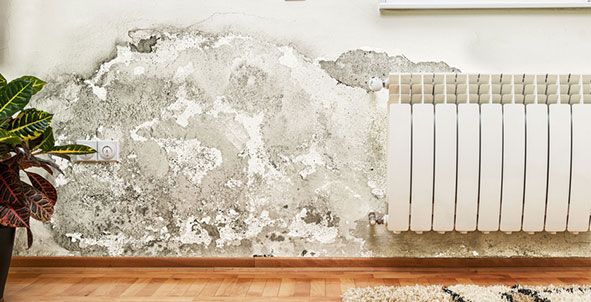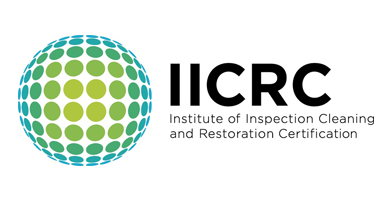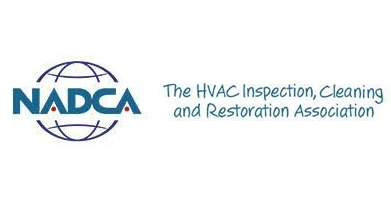About
Consolidated Environmental Inc
About Consolidated Environmental Inc
Consolidated Environmental Inc has been a leader in the environmental remediation industry since 1991. We serve customers in New Jersey and parts of New York and Pennsylvania from our headquarters in Rahway, NJ. Some of our most popular services for homeowners and business owners include:
We have over 30 years of experience you can count on. Call (973) 244-0424 to learn more or for a free estimate.
The Consolidated Environmental Inc History
Founded in 1991 in Fairfield, NJ, Consolidated Environmental Inc. has built a reputation for delivering top-tier remediation, restoration, and retrofit services. Now headquartered in Rahway, NJ, we continue to lead with innovation, integrity, and a commitment to excellence.
Our Energy Services Division was established to address growing demand for advanced building performance solutions, particularly in the areas of Aeroseal technology and mastic sealing of exhaust systems. As early adopters of exhaust retrofit practices, we partnered with industry leaders such as Steven Winter Associates and contributed to groundbreaking pilot research with NY DHCR through the Weatherization Project—assessing the real-world feasibility of ventilation retrofits in multi-family housing.
To date, we've successfully completed work in over 200 multi-family buildings across the NYC area using our proprietary sealing methods. Consolidated Environmental Inc. remains at the forefront of this specialty, offering high-performance solutions that go beyond traditional pressurized fogging and other less effective methods. Our approach delivers measurable results, improved energy efficiency, and healthier indoor environments.
Advanced Certifications & Training Earned by Our Staff Members
The Consolidated Environmental Inc team is dedicated to ensuring the highest standards of indoor air quality. Our IICRC-certified technicians receive advanced training in cleaning and restoration methods approved by the American Conference of Governmental Industrial Hygienists and the NYC Department of Health. Other qualifications we have include:
- Experience in sterile environments that include hospitals, operating rooms, and research labs
- Experience in high-traffic areas, including schools, offices, jails, post offices, and hotels
- NADCA, IICRC, NJSDA, NY State Mold Assessor & Remediator Trained & Licensed, EPA RRP
- OSHA's 10HR, 30HR, 40HR Hazwoper, SST, Confined Spaces, Scissor/Boom Lifts, Aeroseal applications
- Training in the use of HEPA-negative air machines, dislodgers, respirators, HAZMAT suits, and more
Feel free to contact us to learn more about the qualifications and certifications we have that make us perfect for your restoration and remediation job.
Code of Ethics for Our Technicians
Our employees agree to the following professional Code of Ethics:
- We promise to provide competent and honest service to our customers.
- We'll employ source removal techniques to complete our task.
- With our advertising, we'll be truthful and upfront.
- We will provide accurate inspections and evaluations, using this information to determine required services.
- We will only offer our customers the services they need and want; we won't try to sell them unnecessary goods or services.
- We will utilize specialists with advanced skills, tools, or trades not possessed by us when circumstances warrant.
- We will stay abreast of new developments in technology, tools, and other industry upgrades that impact our daily efforts.
- We will require employees to practice furnace/air duct cleaning within NADCA guidelines and the Code of Ethics.
- According to the association's most recently stated criteria, we will provide our services.
Professional Memberships Held by Consolidated Environmental Inc
Professional memberships held by the Consolidated Environmental Inc team include:
- Association of Specialists in Cleaning and Restoration (ASCR)
- National Air Duct Cleaners Association (NADCA)
- Indoor Air Quality Association (IAQA)
To learn more about our restoration, remediation, or retrofitting services for homeowners and business owners, call (973) 244-0424
today!
Example of a Job Completed by Consolidated Environmental Inc
Customer Case Study
Why the Customer Reached Out to Us
The customer required professional mold remediation, HVAC system cleaning and disinfecting, and water damage restoration following a significant leak event in a vacant property.
Solutions We Provided
Many homeowners leave their properties for extended periods, trusting neighbors to handle surface tasks like lawn care or snow shoveling. But when no one regularly checks inside, problems like leaks can go undetected—and the consequences can be severe.
That was the case for a homeowner with residences in both Washington State and New Jersey. After receiving an unusually high water bill for the unoccupied New Jersey home, the owner returned to discover that a rubber washing machine hose had burst. Water had been running undetected for weeks, leading to widespread damage. While some of the water drained through a basement shower and out the back door, significant mold and water damage had already occurred.
The homeowner initially contacted their insurance provider, who brought in Environmental Health Investigations, Inc., a third-party indoor environmental firm, to assess the situation and develop a remediation plan.
Environmental Health Investigations conducted a comprehensive assessment including air and surface sampling, moisture mapping, and invasive inspections. Mold levels were found to be extremely elevated—exceeding 5 million colony forming units per gram in some areas—with several types of mold detected, including Stachybotrys chartarum, Aspergillus, and Penicillium.
Once the environmental assessment and scope of work were completed, our team at Consolidated Environmental Inc. was brought in to execute the remediation and restoration.
Remediation & Restoration Process
Our team specializes in mold remediation, HVAC cleaning and disinfecting, and water damage restoration. In this case, we provided end-to-end service, starting with containment and progressing through structural removal, cleaning, disinfecting, and final clearance testing.
Containment & Worker Safety
We began by establishing full containment under negative air pressure using HEPA-filtered machines and sealing all critical openings with 6-mil poly sheeting. A pressure differential data logger was used to confirm containment integrity throughout the project.
All crew members wore full PPE, including disposable Tyvek suits and HEPA-filtered respirators. A contained decontamination entrance was installed to ensure mold spores did not spread to unaffected areas.
Demolition & Cleaning
Following the environmental scope, our technicians removed all drywall and ceiling materials—even areas without visible mold—due to the high likelihood of hidden contamination. Severely damaged framing was removed, and the remaining wood was cleaned using industry-approved methods and disinfectants.
In one section of the basement, a concealed wall was discovered during demolition. Behind that hidden structure, a secondary wall showed extreme mold contamination. All materials were removed, exposing a cinderblock exterior wall that had been coated with a waterproofing compound that likely contributed to retained moisture.
Moisture testing of exposed walls and floors revealed elevated levels, so we deployed commercial dehumidifiers over several weeks to properly dry the space. After confirming acceptable moisture levels, additional cleaning and disinfection steps were completed to prepare the basement for reconstruction.
Cross-Contamination Prevention
To prevent airborne contaminants from spreading to other areas of the home, we installed containment barriers and used laser particle counters to monitor indoor air quality. Even after the initial cleaning passed clearance testing, our team re-cleaned the upper levels of the home as a precautionary measure.
Verification & Clearance
Once remediation was complete, a follow-up inspection and testing by the environmental hygienist confirmed that indoor mold spore levels were lower than those found outdoors—a strong indicator of successful remediation.
Results & Takeaway
This project highlights the complexity of indoor environmental remediation and the value of working with an experienced team. Every phase—from initial containment and demolition to cleaning, drying, and final clearance—requires precision and care.
At Consolidated Environmental Inc., our philosophy is simple: we do it right or we don’t do it at all. When it comes to the health and safety of building occupants, there is no room for compromise.
Helpful Resources
Memberships
- Association of Specialists in Cleaning and Restoration (ASCR)
- Mechanical Systems Hygiene Institute (MSHI)
- National Air Duct Cleaners Association (NADCA)
- Refrigeration Service Engineers Society (RSES)
General Indoor Air Quality Information
- Environmental Protection Agency
- EPA Publication on Mold Remediation in Schools & Commercial Buildings
- American Society of Heating, Refrigerating and Air Conditioning Engineers, Inc. (ASHRAE)
Asthma/Allergies/Multiple Chemical Sensitivity
- American Lung Association
- Allergy and Asthma Network - Mothers of Asthmatics
- Health House
About
Year Established
Products
Services
- Mold Remediation
- Water and Fire Restoration
- Exhaust Retrofitting and Duct Sealing
- HVAC and Duct Cleaning
- Contents Restoration
- Rodent Cleanup Work
- Storm and Disaster Restoration
- Kitchen Hood Cleaning
Specialties
- Air Duct Cleaning
- Commercial and Residential Duct System Cleaning
- Construction Services
- Corporate, Commercial, and Residential Services
- Disaster Restoration
- Disaster Restoration Services
- Duct System Cleaning
- Exhaust Retrofitting
- Fire Damage
- Fire Damage Restoration
- Flood Damage
- Flood Damage Restoration
- HVAC Cleaning
- HVAC Inspection, Cleaning, and Restoration
- HVAC System Inspection, Cleaning, and Restoration
- HVAC Technology and Remediation Procedures
- Industrial, Commercial, and Residential Environment Services
- Mechanical Hygiene and Air Duct Cleaning
- Mechanical Hygiene Services
- Professional Rodent Clean-Up
- Remodeling Services
- Roof Replacement
- Roof Replacement Services
- Storm Damage
- Storm Damage Restoration
- Technologically Advanced Cleaning
- Water and Fire Damage Restoration Services
- Water Damage
- Water Damage Restoration
- Consulting
- Content Restoration Services
- IICRC Certification
- Mold Remediation
- Exhaust Retrofitting and Duct Sealing
- HVAC and Duct Cleaning
- Contents Restoration
- Storm and Disaster Restoration
Business Hours
- Mon - Fri
- -
- Sat - Sun
- Closed
Holiday Hours
Associations
Brands
Pickup and Delivery
Payment Options
- American Express
- Cash
- Check
- Discover
- MasterCard
- Visa
Languages
- English
- Spanish




Share On: